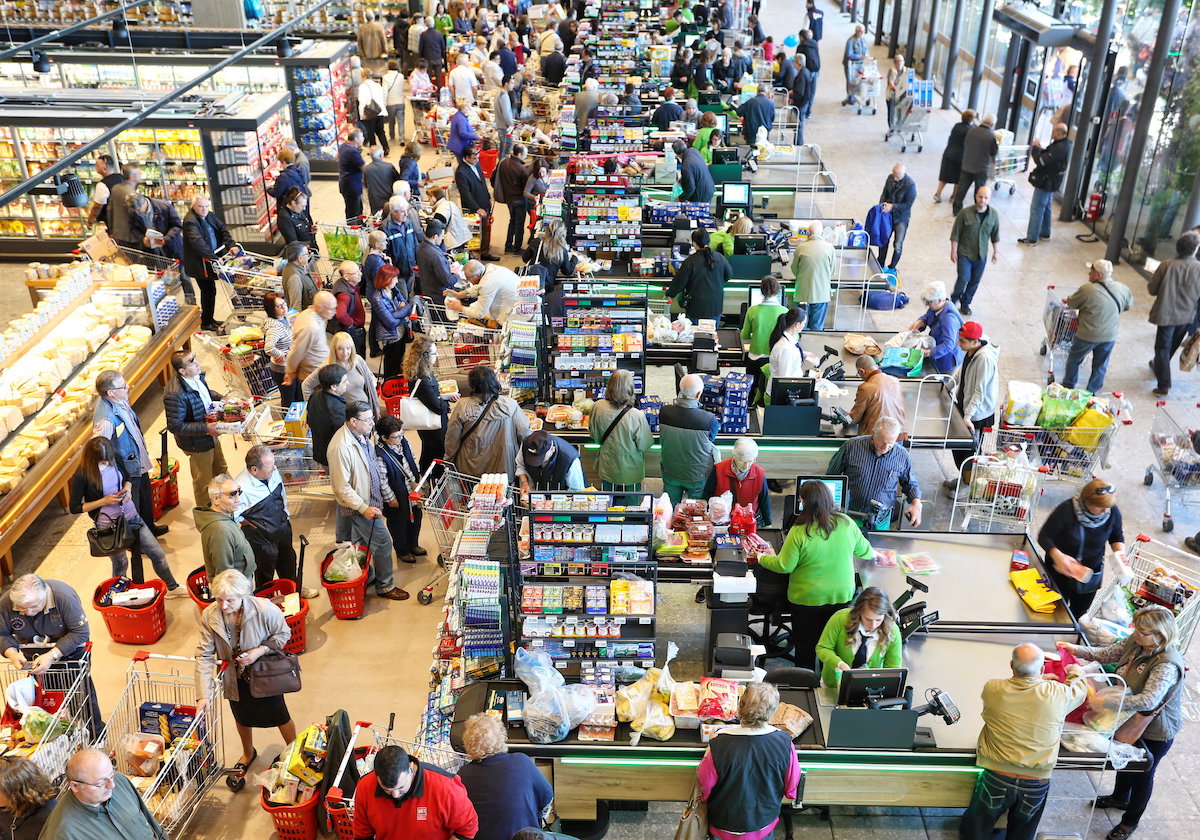These Are the Most High-Risk Times to Visit the Grocery Store

The introduction of plexiglass partitions, foot-traffic arrows, face mask protocols, self-service credit-card use, and social-distancing measures aren’t the only ways in which grocery shopping has profoundly changed since the coronavirus pandemic began. As consumers, we’ve entirely changed when we like to brave a trip to the grocery store, as well—and this shift in our behavior could potentially impact not only our collective health and safety but also what we choose to buy and eat.
According to Placer Labs, a California-based tech company that measures foot traffic in stores to help retailers better understand consumer behavior, our grocery shopping habits have essentially been turned upside-down since the lockdown began.
In a new study, Placer focused on shopping habits at several popular grocery stores and wholesalers, including Albertsons, Kroger, Whole Foods, Trader Joe’s, Publix, and Wegmans.
During March 2019 to March 2020, the retailers all showed that most customers (more than half) preferred to shop for their groceries on weekends. Fast-forward to the same period in 2020, and more than half of the stores’ customers had flipped their habits to shopping on weekdays. (There were minimal discrepancies that bucked this trend, including the fact that Whole Foods experiencing a “slight increase” in Sunday shoppers.)
Additionally, the researchers found that grocery shoppers are increasingly moving their trips to the morning hours and away from the afternoon and evening hours. “Eight brands saw dramatic increases in the percentage of visits taking place between 6 and 11 am,” the researchers wrote. “11 am through 4 pm stayed fairly level, with the evening seeing the biggest decrease.”
Focusing specifically on Wegman’s and Publix, Placer noted that the peak shopping hours had shifted to the way early morning. “Wegman’s shows a massive jump in morning traffic, with over double the percentage of visits coming between 7 and 8am, and nearly double between 8 and 9am,” the researchers write. “Publix saw a similar pattern.”
The time of the day when foot traffic has dramatically plummeted? The evening hours, in what during normal times might be considered a post-work stop at the store on your drive home.
The researchers speculate that these changes in hours might have an impact on what we choose to buy.
“Interestingly, the move also opens up questions of whether this could impact actual purchasing patterns,” they write. “For example, could the bright-eyed morning visit drive more sales for pre-planned meals at the expense of ready-made options?”
Regardless, one thing is clear: If you’re looking out for your health and safety—and the health and safety of those around you—you’d be wise to avoid peak shopping hours. Just last week, the CDC cited that person-to-person contact remains the overwhelming way you’re most likely to contract COVID-19.
“It may be possible that a person can get COVID-19 by touching a surface or object that has the virus on it and then touching their own mouth, nose, or possibly their eyes, but this isn’t thought to be the main way the virus spreads,” the CDC noted.
That’s why we’d advise you to visit grocery stores on their off-peak hours, which right now means potentially avoiding the early morning on weekdays, and rescheduling that trip for a weekend late-afternoon or evening.
It’s not just for your health—it’s also for the health of the most at-risk people among us: seniors. After all, many grocery stores have been encouraging seniors to come in early in the morning to beat later crowds. Given that coronavirus-related deaths are heavily impacting older Americans, you’d be smart to give them some space. And for more tips for shopping smarter during the pandemic, make sure you know The Major Changes to Expect at Stores in the Days Ahead.








